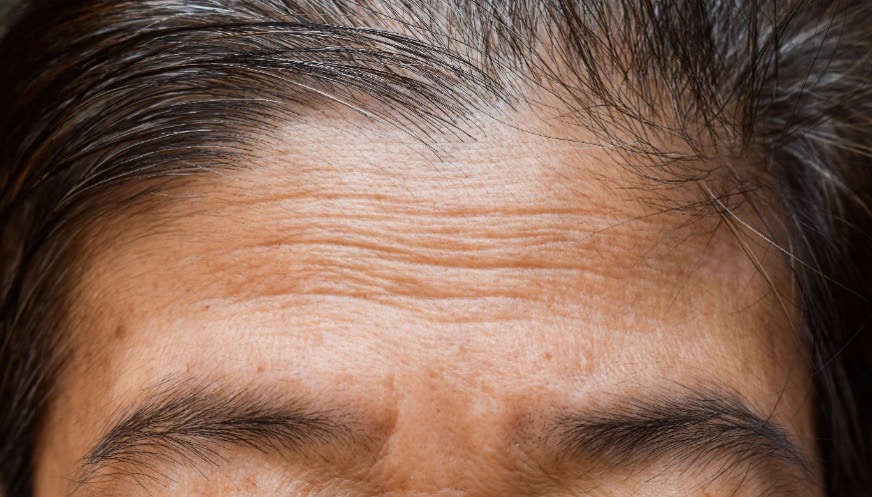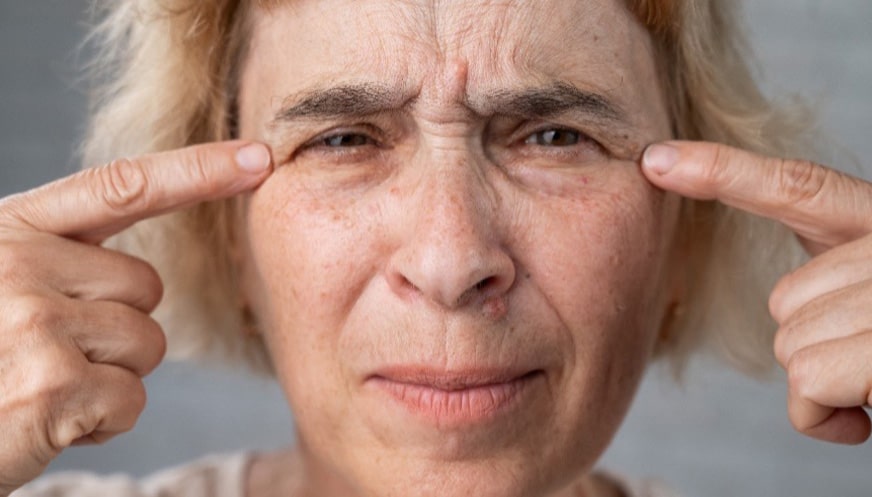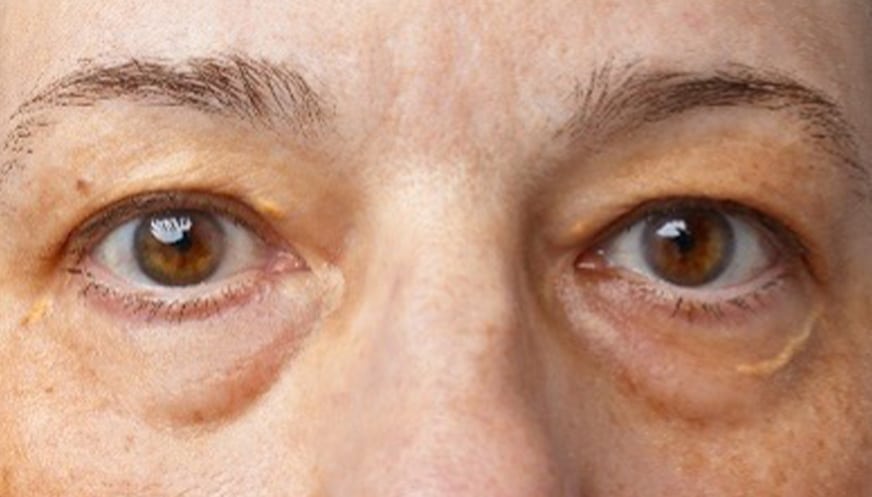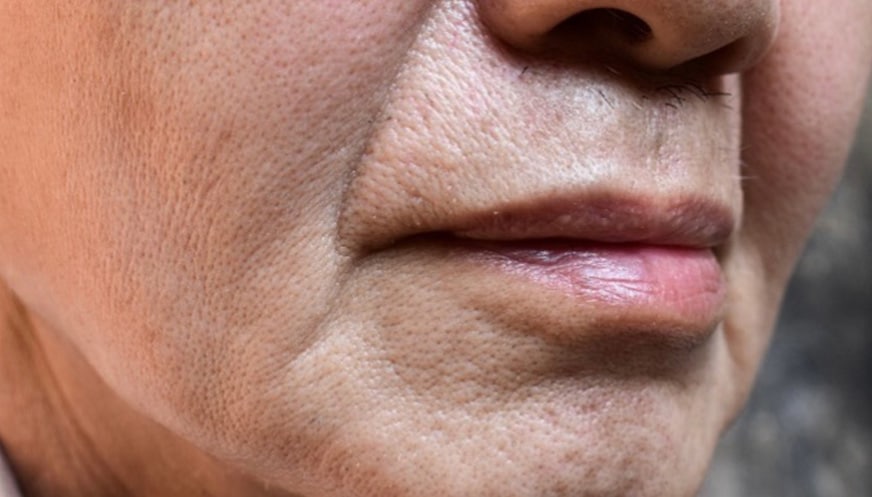Botox is Poison and Doesn’t Solve the Root Cause

In September 2023, the UK government reported that they were launching an inquiry into unregulated cosmetic activities, in an effort to protect consumers from “botched” procedures like Botox. The UK government news report went on to say that there were around 900,000 Botox injections each year, and in 2022 there were over 2,000 complaints related to the injection.
But were these complaints for botched procedures? Botox, short for botulinum toxin, is derived from clostridium botulinum, a bacterium that produces dangerous biological chemicals that attack the nervous system. Specifically, Botox blocks the release of key substances in the body that are responsible for muscle contraction. While orthodox medicine does use Botox in medical management[i] (despite there being numerous non-toxic alternatives), more commonly, it’s used as an aesthetic treatment to reduce the appearance of wrinkles. This article will discuss the long-term consequences of Botox, and why consumers may truly be unhappy with the results, and it’s not because beauty consultants require further regulation.
What is Botox?
- botulinum produces 8 separate exotoxins[ii] (toxins that are released directly into the area that the bacteria has colonised). The type used for cosmetic Botox injections is the most potent type of the eight exotoxins, botulinum toxin-A. Botulinum toxin-A is also the same toxin type that gives rise to Botulism, a disease that is fatal in 5-10% of cases. This is why medical professionals sometimes call Botox the “miracle poison,” as it’s made of one the most hazardous toxins ever investigated for medical use.
Botox is a neurotoxin, and it has numerous adverse effects and serious side effects. Commonly Botox causes temporary paralysis of the facial muscles, flu-like symptoms, allergic reaction, pain, and bruising, which is consistent anytime something toxic is injected into the skin. More seriously, Botox also permanently paralyses the muscle. After repeated use, it shrinks and inactivates normal muscle function, as well as damages the skin and near-by tissues at the injection site, such as lymph and sebaceous glands. Lymph and sebaceous glands act as small filters in the body to help fight infections and produce natural oils to keep the skin soft and moist. Damaging these delicate glands can lead to increased infections, swelling, unsightly acne, cysts, and skin irritation, just to name a few adverse outcomes.
Long-term use of Botox also leads to muscle atrophy (the complete loss of muscle function). In some cases, this muscle atrophy can be reversed after many months without injections on its own. But more commonly, the damaging effects of Botox on the face is sustaining, and outside interventions like massage, acupuncture or complete facial rehabilitation is required.!
Worryingly, Botox injections are usually scheduled every three months, and that frequency can quickly cause a more permanent atrophy in some people. This leads to a change in facial expression for the worse, such as the “frozen” or “drooping” appearance often seen with Botox use.
It cannot be underestimated the addictive nature of Botox injections. Botox’d skin does not have a healthy elasticity or integrity, that’s why it’s wrinkling. Therefore, people are often forced to have more frequent injections as the muscle resists the toxin, or other injections as the muscle tone breaks down after repeated exposure to the toxin. When the toxin tolerance level is reached, to maintain any structure to the face, more “miracle poisons” are injected or radical surgeries suggested, leading to irreversible damage.
Our Skin is a Vital Sign
Wrinkling, sagging, puffiness, and changes in colouration indicate critical nutrient deficiencies and internal health challenges. These health challenges can be environmental (air pollution), but often, it’s based on our own choices, like drinking coffee, excess alcohol, smoking cigarettes, heating hydrogenated oils (like sunflower oil, rapeseed oil or vegetable oil), or eating processed junk food in general. Botox masks these environmental challenges, nutritional deficiencies, and poor lifestyle decisions, while introducing permanent structural issues to the face.
In Traditional Chinese Medicine (TCM) the face is an essential component of diagnosis—not just of nutritional deficiencies manifesting in the skin (the exterior), but disharmony of the body’s organs (the interior). Premature skin aging is seen as an imbalance within the body, and facial lines are assessed to understand and treat the root cause of aging.

Forehead lines: Horizontal lines on the forehead, when observed with other factors, relate to issues within the digestive system and bladder. This could be due to stress, gut dysbiosis or compromised bladder function.

Lines between the eyebrows: The utilisation of the face will lead to some frown lines, but sudden or deepening frown lines could signify liver imbalances or digestive issues.

Under eye lines or puffiness: In TCM, this often relates to disharmony in the kidneys. Other symptoms would be problems with sleep or fluid balance in the body.

Nose lines and lines around the mouth (nasolabial folds and marionette lines): These lines are often associated with digestive issues or as TCM describes it, issues associated with the spleen and stomach.
TCM practitioners will consider the location, depth and appearance of facial lines, and other factors, to make crucial diagnosis. Hiding these lines with toxic chemicals like Botox could delay accurate diagnosis, and lead to reduction in overall health. With premature aging, it’s important to consider the root cause of the lines, as once that’s addressed, you will naturally see a more youthful, wrinkle-free face.
Facing the Facts
Premature aging is reversible, especially when caught in time. But Botox will delay this and hinder your face’s natural self-healing processes.
Those who have been prescribed Botox injections often are at risk of botulism-like symptoms such as hoarseness and discomfort / difficulty in swallowing, nerve damage, skin dryness (due to decrease in sweat gland activity), and permanent changes to the face due to muscle atrophy. These same adverse effects are present for those having cosmetic injections, but as Botox is readily administered in a multitude of settings, these effects are rarely captured or reported.
Oftentimes, beauty consultants are blamed for being poorly qualified or undertaking unhygienic practices when people face obvious adverse consequences of Botox. This is unfair, as often the complaints received around Botox are more rightly attributed to the toxin itself, not the person administering it. There is no safe way to administer a neurotoxin, and long-term damage is inevitable.
Natural anti-aging face masks and creams containing turmeric, Gotu Kola, ginger, Frankincense, cinnamon, sage, rosemary, avocado, pomegranate, and cucumber are extremely nourishing for the skin. On the inside, balancing your gut microbiome, drinking Turmeric Lattes, quitting smoking and reducing stress will also reduce the signs of pre-mature aging. Healing from the inside-out, focusing proteins and a colourful nutrient-dense diet will also help you recover from the dangerous consequences of Botox use.
At CNM you can take a diploma programme in Herbal Medicine, or a short course in Natural Skincare, to not only help your own understanding of healthy skin, but to also help your clients revitalise and protect themselves from premature wrinkling.
As we navigate the art of graceful aging, let us embark on a journey guided by traditional medical practice, that focuses on nurturing our skin from within and celebrating beauty at every stage in life.
References
[i] Ali S. Al-Ghamdi, Noah Alghanemy, Hanan Joharji, Dhafer Al-Qahtani, Hasan Alghamdi, Botulinum toxin: Non cosmetic and off-label dermatological uses, Journal of Dermatology & Dermatologic Surgery, Volume 19, Issue 1, 2015, Pages 1-8, ISSN 2352-2410, https://doi.org/10.1016/j.jdds.2014.06.002.
[ii] Nigam PK, Nigam A. Botulinum toxin. Indian J Dermatol. 2010;55(1):8-14. doi: 10.4103/0019-5154.60343. PMID: 20418969; PMCID: PMC2856357.
Written by Charlee Martin



